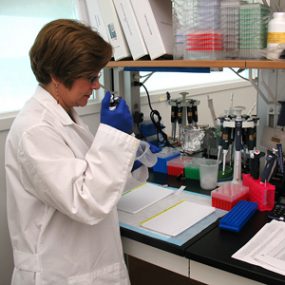Parasitic Information for Specific Groups
CDC offers a number of services for health professionals.
Subject matter experts from CDC’s Division of Parasitic Diseases and Malaria (DPDM) are available on a 24-hour, 7-day-a-week basis to assist health professionals with diagnosis and treatment of parasitic diseases that are potentially life threatening.

DPDM conducts laboratory research that contributes to the overall mission to prevent and control parasitic diseases, both domestically and internationally. Scientists in DPDM
- Identify and characterize new disease-causing parasites using DNA analyses and genomics,
- Study the natural cycles of parasite transmission and infection in humans and animals,
- Study the immune response to parasitic infections, and
- Examine the responses in infected people to confirm successful cures in patients.
Scientists also are investigating the processes that parasites use to infect and cause disease in people and animals and the ways parasites become resistant to methods of treatment and prevention.
Infection with a number of parasites can lead to special consequences for women. Some examples are given below.
- Infection with Toxoplasma gondii, a parasite found in undercooked meat, cat feces, soil, and untreated water can lead to severe brain and eye disorders in a fetus when a pregnant woman becomes newly infected.
- Trichomonas vaginalis, a sexually transmitted parasite that can be passed between partners, can lead to vaginal infection and increase a woman’s susceptibility to human immunodeficiency virus (HIV) infection.
- Pregnant women in malaria-endemic countries are at increased risk for adverse effects of malaria infection (for example, miscarriage, low birth weight).

Parasitic infection or infestation can occur in children of all ages. Infants, toddlers, and very young children in day care settings are at risk for the parasitic disease called giardiasis that causes diarrhea and is spread through contaminated feces. Pinworm infection (enterobiasis) also occurs among preschool and young school-age children. Both preschool and school-age children can become infested with head lice (pediculosis) or scabies, both of which are spread by close person-to-person contact as is common during childhood play.
International travelers can be at risk for a variety of infectious and non-infectious diseases. Travelers may acquire parasitic illnesses
- Through ingestion of contaminated food or water,
- By vector-borne transmission, or
- Through person-to-person contact.
Contaminated food and drink are common sources for the introduction of infection into the body. The table below shows some of the more common parasitic infections that travelers can acquire from contaminated food and drink, as well as a few of the less common parasitic diseases that travelers are at risk for acquiring. The risk of acquiring these parasites varies greatly by region of the world and specific country. Many infectious diseases transmitted in food and water can also be acquired directly through the fecal-oral route.